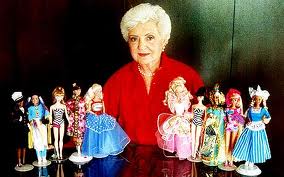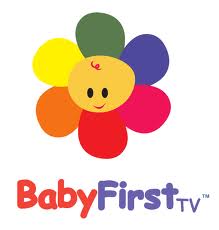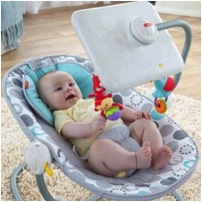"For the first time in human history, children are born into homes where mass-mediated storytellers reach them on average of more than seven hours a day. Most waking hours, and often dreams, are filled with their stories. These stories do not come from families, schools, churches, neighbourhoods, and often not even from the native countries. They come from a small group of distant conglomerates with something to sell."
Trailer for Consuming Kids |
Children are naïve about advertising and can easily be manipulated and exploited by marketers to want and demand their products. Corporate marketers believe that over time they can be shaped into lifelong consumers with brand loyalties and that can be profitable for decades to come. What is more, children influence family spending decisions worth hundreds of billions of dollars on household items like furniture, electrical appliances and computers, vacations, and even the family car. |
On the advice of marketing psychologists, producers and marketers of the early 20th Century directed advertising to children as a way of breaking family habits of thrift and resource sustainability.
In the mid-1950s a relative newcomer to the toy industry, Mattel, began advertising directly to children. Ruth  Handler (pictured), one of Mattel’s founders, claimed: “By advertising on a children’s television show, we proved that both a toy and its brand name could be sold directly to the consumer, the child.” This effectively meant that parental approval could be by-passed, especially if children could acquire their own source of money, which increasingly became the case. Questions of whether a toy was good value, beneficial to development, or compatible with the family’s values, became largely redundant as filters through which toys passed.
Handler (pictured), one of Mattel’s founders, claimed: “By advertising on a children’s television show, we proved that both a toy and its brand name could be sold directly to the consumer, the child.” This effectively meant that parental approval could be by-passed, especially if children could acquire their own source of money, which increasingly became the case. Questions of whether a toy was good value, beneficial to development, or compatible with the family’s values, became largely redundant as filters through which toys passed.
Selling directly to children was part of a new approach to childhood more generally. The notion that children know what is best for them was seized upon by the toy industry. For instance, the giant toy retailer Toys ‘R’ Us put out a brochure claiming that children are the experts in toys and that others should bow to their knowledge (and desires) in this area. Parents are encouraged to abrogate their own judgement about their children’s needs and leave decisions to the children themselves. Given the significant influence advertising and marketing strategies have on children’s assessment of their own needs and desires this has meant essentially letting the toy industry and related “children’s industry” decide.
By the 1980s many corporations were targeting their marketing messages directly to children as affluent adult markets became saturated with consumer goods. Large firms established ‘kids’ departments and smaller firms specialised in marketing to children. A number of advertising industry publications were created such as Selling to Kids and Marketing to Kids Report. The academic literature began to feature studies of children as consumers.
In the US the amount corporations spent marketing to children under twelve increased by five times between 1980 and 1990 and ten times more during the 1990s. In 2004 around $15 billion was being spent marketing to children. In Australia the number of advertisements aimed at children tripled between the 1980s and 2002. Conferences on the best ways to market to children are held all over the world. There are also awards for the best advertisements and marketing campaigns with hundreds of entries.
Advertisers have recognised that the amount of money that children have to spend is significant. According to Direct Marketing magazine, by the age of eight children make most of their own buying decisions. In the US children under 12 spend between $11 and $30 billion of their own money and teens spend another $94-$153 billion. In the UK, children between 8 and 14 have a disposable income of around US$2.7 billion a year.
Children under 12 still spend their money on sweet things, snacks and playthings but since the 1990s they have been increasingly spending their own money on clothes and sports shoes, attracted by brand names and the chance to express their identity through clothing. Whilst child-targeted advertising once concentrated on sweets and toys, it now includes clothes, shoes, a range of fast foods, sports equipment and toiletries.
Children’s deodorant, cologne, moisturiser, hair mousse, perfumes, even after-shave for pre-pubescent boys, are all available on the market in the US for those who have not yet reached their teens. None of these things are necessary for children but can easily be marketed to them in the way they are to adults by working on their personal insecurities.
 As the amount of money being spent increased, the age that children were targeted decreased. A marketing conference in 2000 in New York was entitled “Play-Time, Snack-Time, Tot-Time: Targeting Pre-Schoolers and their Parents”. There is even a US cable station, BabyFirstTV, that airs 24 hours a day and which aims at six-month to two-year-olds.
As the amount of money being spent increased, the age that children were targeted decreased. A marketing conference in 2000 in New York was entitled “Play-Time, Snack-Time, Tot-Time: Targeting Pre-Schoolers and their Parents”. There is even a US cable station, BabyFirstTV, that airs 24 hours a day and which aims at six-month to two-year-olds.
The international children’s market is increasingly attractive to transnational corporations who seek to make their brands and products popular in different cultural milieus. The food industry was a pioneer in these efforts. In 1997 Brandweek magazine noted that McDonald’s was the favourite fast food all over the world and Coca-Cola the favourite drink.
 Not only are there many more advertisements aimed at children but they are increasingly infiltrating the private and public spaces where children play and learn. Today’s children are confronted with advertisements almost everywhere they go. There are now television stations, radio stations, newspapers and magazines delivering underage audiences to advertisers 24 hours a day.
Not only are there many more advertisements aimed at children but they are increasingly infiltrating the private and public spaces where children play and learn. Today’s children are confronted with advertisements almost everywhere they go. There are now television stations, radio stations, newspapers and magazines delivering underage audiences to advertisers 24 hours a day.
In 1990 Radio AAHS was established by the Children’s Broadcasting Corporation in the US to cater to listeners up to age 12. It played kids news, music, fairy tales, and stories 24 hours a day. Major advertisers soon included McDonald’s, Sears, Kellogg’s and Kraft. Nickelodeon, which is a children’s cable television station, and the Cartoon Network get a major share of children’s advertising.
And television is not the only way for advertisers to reach children. The internet, video games and mobile phones have also provided opportunities for “new, personalized promotions” aimed at children.
American children spend more than 6 hours a week listening to the radio, almost 6 hours a week playing video games, 7 hours a week on the computer and internet, and almost 3 hours going to the movies. Some of these activities overlap. Most of this media is interspersed with advertising.
A vast interlocking of commercial interests has developed with children as their common target audience, including television programming, advertising, movies, toys, licensed products and games. Cartoon characters are launched as movies, followed up with a television series and then merchandised on hundreds of products from t-shirts to toys.
 Not only are there many more advertisements aimed at children but they are increasingly infiltrating the private and public spaces where children play and learn. Advertising aimed at children is ubiquitous and omnipresent and ever more pervasive. Every avenue of children’s play and entertainment is branded and there seem to be no limits to where advertisers and markets are willing to go. Children are exposed to advertisements, direct and overt, every waking moment; the mission of corporations is to make sure their products and brands are always in the minds of children.
Not only are there many more advertisements aimed at children but they are increasingly infiltrating the private and public spaces where children play and learn. Advertising aimed at children is ubiquitous and omnipresent and ever more pervasive. Every avenue of children’s play and entertainment is branded and there seem to be no limits to where advertisers and markets are willing to go. Children are exposed to advertisements, direct and overt, every waking moment; the mission of corporations is to make sure their products and brands are always in the minds of children.
Today’s children are confronted with advertisements almost everywhere they go, at any time. By the age of 17 teenagers all over the world will have been exposed to hundreds of thousands of advertisements. Today it is advertising jingles that children sing rather than nursery rhymes.
For the first time in human history, children are born into homes where mass-mediated storytellers reach them on average of more than seven hours a day. Most waking hours, and often dreams, are filled with their stories. These stories do not come from families, schools, churches, neighbourhoods, and often not even from the native countries. They come from a small group of distant conglomerates with something to sell.
Individual commercials are repeatedly shown for months and “effectively penetrate” the language and thinking of young children. They repeat advertising jingles and slogans to friends, draw advertising images and logos in their artwork, and discuss advertisements with their friends. Roy Fox, in his book Harvesting Minds, pointed out: “A person’s image and language create his or her sense of selfhood. And this selfhood – especially during our formative years – is the most valuable, fragile quality we’ll ever embrace.” Yet it is sold as a commodity over and over.
The time children spend listening to and watching marketing messages far outweighs the time they spend listening to parents. Even children themselves are disturbed by the amount of marketing they are subject to. An Australian survey found that 88 per cent of children felt companies were trying to sell them things they didn’t want.
The consumer world that children are immersed in is also addictive and self-replicating. Children come to crave the sugar, fat and salt laden foods that are marketed to them. They are introduced to addictive substances such as alcohol and cigarettes at an early age. The video games, television programmes, and virtual worlds are addictive. Games are deliberately designed to be “addictive”. Some even include a “viral component”, that is a way for players to contact friends to invite them to play the game.
Most addictive and self replicating, however is the culture of consumerism and shopping. Children are persuaded that they will not be happy unless they have the toys and clothes that other children think are cool and this is encouraged with viral marketing. This can be expected to have repercussions for areas of children’s social development, with their well-being subordinated to corporate goals of profit and growth. This may in turn lead to a complex and largely uninvestigated range of psychological and social damage.